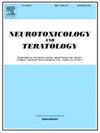Assessment of adverse childhood experiences in adolescents from a rural agricultural community: Associations with depressive symptoms and psychosocial problems
IF 2.6
3区 医学
Q3 NEUROSCIENCES
引用次数: 0
Abstract
The main goal of this study was to determine the prevalence of adverse childhood experiences (ACEs) among Latino adolescents from an agricultural community and to examine how it may impact their neuropsychiatric functioning. This research particularly assessed the association between ACEs and depression, as well as ACEs and psychosocial problems. The study sample consisted of 852 adolescents treated at a rural primary care clinic with a comprehensive ACE screening protocol that assesses for ACEs, depressed mood, and psychosocial functioning during every annual Well-Child Visit. Study results showed that ACEs were relatively common among participants with 64 % endorsing having experienced at least one ACE. Approximately 23 % of participants screened positive for depressed mood and 11 % for psychosocial problems. ACEs were found to have significant associations with both depression symptoms and with psychosocial problems. Males were found to have less depression symptoms than females among subjects with exposure to most ACE types, and older age was associated with lower psychosocial impairment. Study participants live in an agricultural community and are likely exposed to both chemical and non-chemical stressors. The exposure to ACEs and chemical environmental stressors may interact with pathological synergy to alter their biobehavioral development. Further research is needed to understand the “rules” for which stressors at what dose and at what stage of development place youth at greatest risk.
农村农业社区青少年童年不良经历评估:与抑郁症状和社会心理问题的关系。
本研究的主要目的是确定来自农业社区的拉丁裔青少年童年不良经历(ACEs)的发生率,并研究ACEs如何影响他们的神经精神功能。这项研究特别评估了ACE与抑郁症以及ACE与社会心理问题之间的关联。研究样本包括在一家农村初级保健诊所接受治疗的 852 名青少年,该诊所采用全面的 ACE 筛查方案,在每年的儿童健康检查中对 ACE、抑郁情绪和社会心理功能进行评估。研究结果表明,ACE 在参与者中较为常见,64% 的参与者表示至少经历过一次 ACE。约 23% 的参与者情绪低落,11% 的参与者有心理社会问题。研究发现,ACE 与抑郁症状和社会心理问题都有显著关联。在接触过大多数 ACE 类型的受试者中,男性的抑郁症状少于女性,年龄越大,心理社会损伤越小。研究参与者生活在农业社区,很可能同时暴露于化学和非化学压力源。暴露于 ACE 和化学环境压力源可能会产生病理协同作用,从而改变他们的生物行为发展。还需要进一步研究,以了解哪些压力源以何种剂量、在哪个发育阶段会使青少年面临最大风险的 "规则"。
本文章由计算机程序翻译,如有差异,请以英文原文为准。
求助全文
约1分钟内获得全文
求助全文
来源期刊
CiteScore
5.60
自引率
10.30%
发文量
48
审稿时长
58 days
期刊介绍:
Neurotoxicology and Teratology provides a forum for publishing new information regarding the effects of chemical and physical agents on the developing, adult or aging nervous system. In this context, the fields of neurotoxicology and teratology include studies of agent-induced alterations of nervous system function, with a focus on behavioral outcomes and their underlying physiological and neurochemical mechanisms. The Journal publishes original, peer-reviewed Research Reports of experimental, clinical, and epidemiological studies that address the neurotoxicity and/or functional teratology of pesticides, solvents, heavy metals, nanomaterials, organometals, industrial compounds, mixtures, drugs of abuse, pharmaceuticals, animal and plant toxins, atmospheric reaction products, and physical agents such as radiation and noise. These reports include traditional mammalian neurotoxicology experiments, human studies, studies using non-mammalian animal models, and mechanistic studies in vivo or in vitro. Special Issues, Reviews, Commentaries, Meeting Reports, and Symposium Papers provide timely updates on areas that have reached a critical point of synthesis, on aspects of a scientific field undergoing rapid change, or on areas that present special methodological or interpretive problems. Theoretical Articles address concepts and potential mechanisms underlying actions of agents of interest in the nervous system. The Journal also publishes Brief Communications that concisely describe a new method, technique, apparatus, or experimental result.

 求助内容:
求助内容: 应助结果提醒方式:
应助结果提醒方式:


